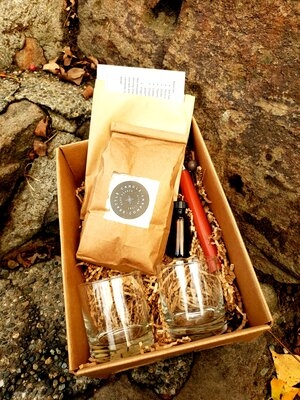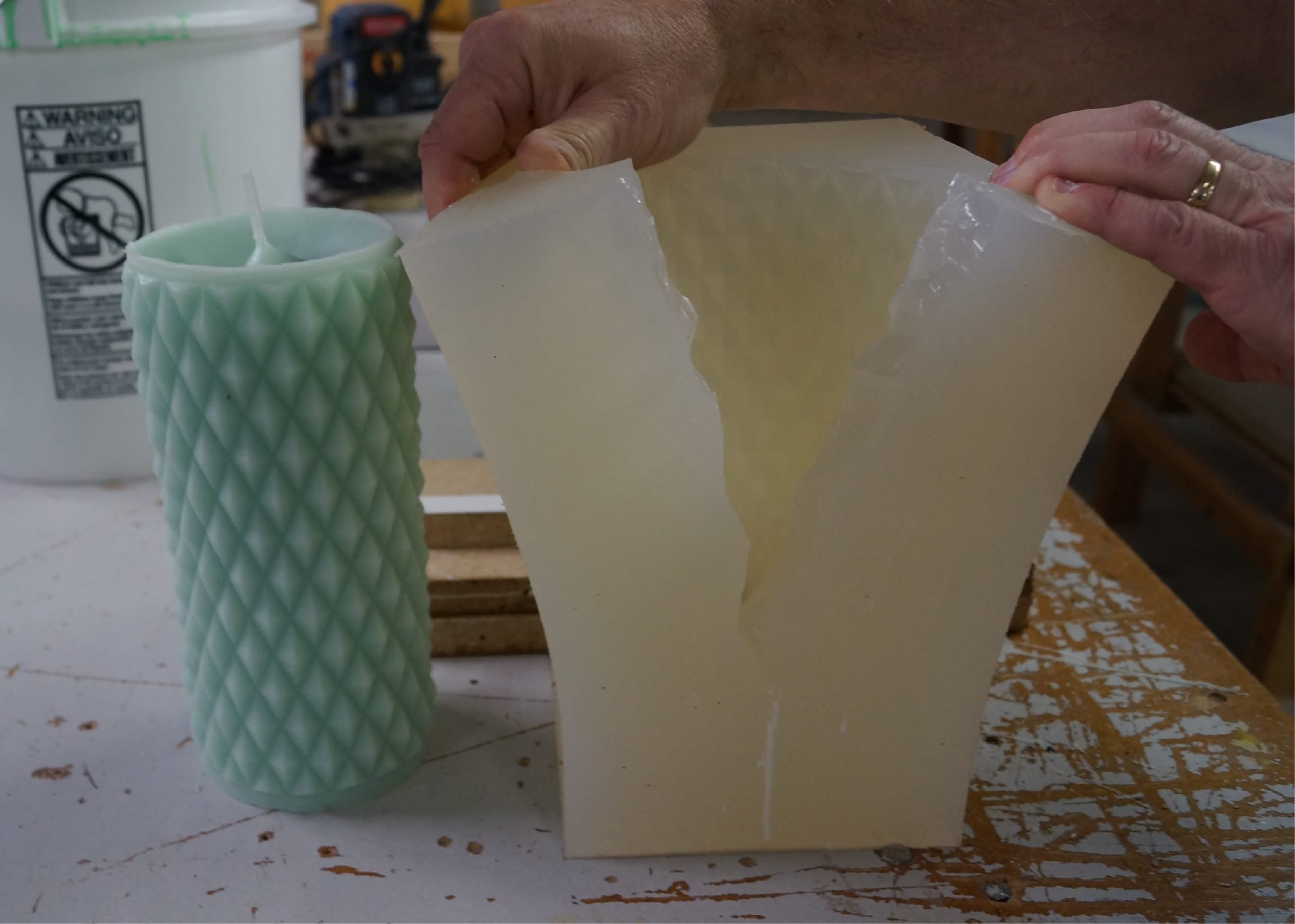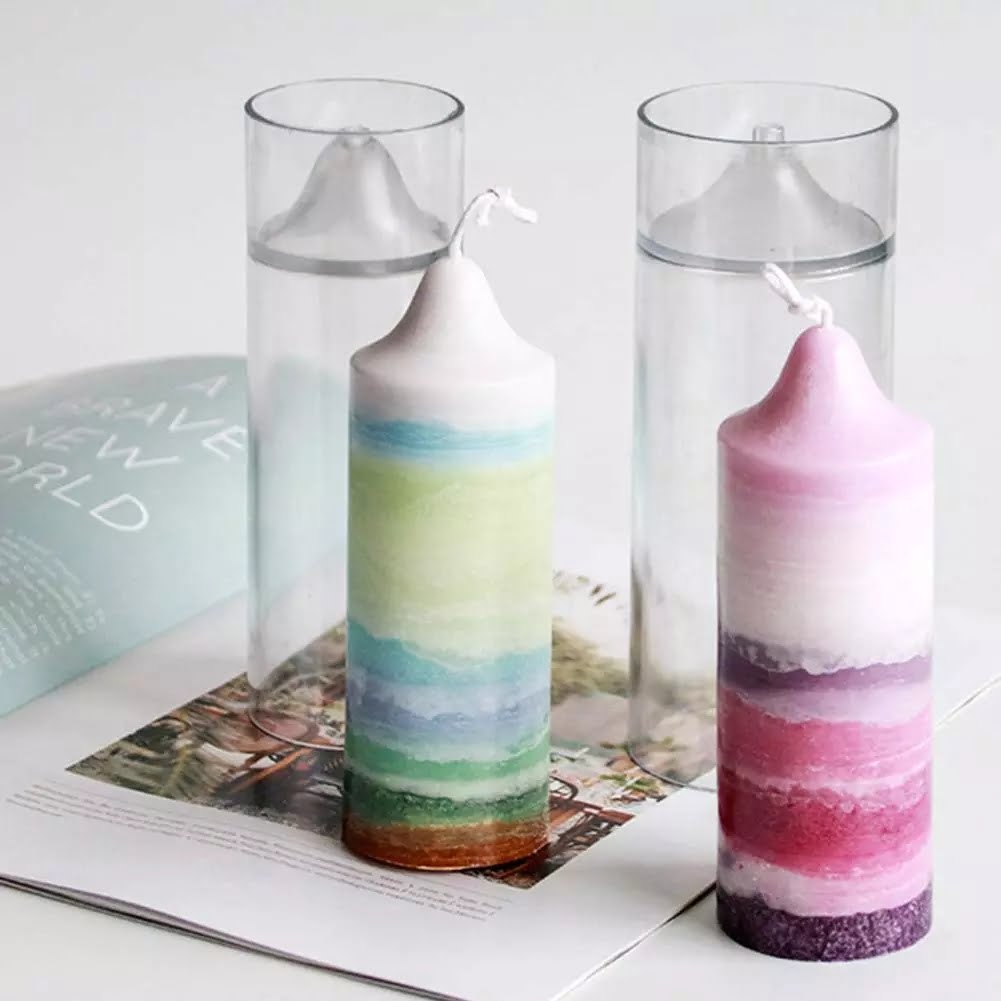Are you interested in learning the art of candle making and design? Look no further than “The Complete Technology Book on Candle Making & Designs”. This comprehensive guide covers everything from the history of candle making to essential tools and supplies, different types of wax, fragrance oils, safety tips, DIY projects, advanced techniques, and troubleshooting common issues. Whether you’re a beginner or experienced candle maker, this book has something for everyone.
In this technology book, you will delve into the fascinating history of candle making, exploring its journey from ancient times to the modern day. Discover how this traditional craft has evolved over the centuries and learn about its cultural significance. From there, you will be introduced to the essential tools and supplies needed for candle making, ensuring that you have everything you need to get started on your own creations.
As you progress through the book, you will explore different types of wax for candle making and learn about their pros and cons. You will also uncover the art of candle design, with valuable tips and tricks to help you create beautiful and unique candles. Whether it’s carving, embedding, layering, or experimenting with fragrance oils and essential oils for scented candles, this book has all the information you need to unleash your creativity in the world of candle making.
History of Candle Making
Candle making has a rich and storied history that spans across ancient civilizations to the modern day. In ancient times, candles were made from tallow, beeswax, or animal fat, and were primarily used for functional purposes such as light sources for homes and religious ceremonies. The early Egyptians are credited with creating some of the earliest candle designs using beeswax, while the Romans developed a more efficient method using tallow.
Evolution of Candle Making
As time progressed, the process of candle making evolved, with new materials such as spermaceti (from whales) and paraffin wax being introduced. By the 18th century, candles were being mass-produced using molds and machines, making them more accessible to the general population. With the advent of electricity in the late 19th century, candles transitioned from necessity to luxury items associated with ambiance and relaxation.
Modern Day Candle Making
In modern times, candle making has become a popular hobby and small business endeavor. The availability of various waxes, dyes, fragrances, and molds has allowed for an endless array of designs and styles.
From traditional pillar candles to decorative jar candles and intricate sculpted pieces, there is no limit to the creativity that can be achieved through candle making. Additionally, advancements in technology have led to safer methods of production and a greater understanding of how different materials impact the burning quality of a candle.
The rich history of candle making serves as an inspiration for enthusiasts eager to explore both traditional techniques and innovative designs outlined in the complete technology book on candle making & designs Whether you are interested in honoring age-old practices or experimenting with cutting-edge methods, understanding the roots of this craft provides valuable insight into its timeless allure.
Essential Tools and Supplies for Candle Making
When it comes to creating beautiful and fragrant candles, having the right tools and supplies is essential. Whether you are a beginner or an experienced candle maker, having the proper equipment can make all the difference in the quality and outcome of your candles. In this section, we will explore the essential tools and supplies needed for candle making.
Candle Making Tools
One of the most important tools for candle making is a double boiler or pot to melt the wax. This allows for even heating and prevents scorching. A thermometer is also crucial for monitoring the temperature of the wax, as overheating can affect the quality of the candle. Other essential tools include a heat-resistant stirring utensil, such as a metal spoon or silicone spatula, a scale for measuring ingredients, and molds or containers for shaping the candles.
Candle Making Supplies
In addition to tools, there are several supplies that are necessary for candle making. The type of wax chosen will determine the specific supplies needed, but some common essentials include wicks, fragrance oils or essential oils, dye chips or colorants, and wick holders to keep the wick centered during pouring. It’s also important to have a clean work space with protective coverings to prevent spills and messes.
Safety Equipment
It’s crucial to prioritize safety when making candles. Protective equipment such as gloves and safety goggles should be worn when handling hot wax. Fire safety equipment should also be readily available in case of accidents. Having a fire extinguisher nearby and working in a well-ventilated area can help minimize risks associated with candle making.
With the right tools, supplies, and safety measures in place, you can confidently embark on your journey into candle making using
Different Types of Wax for Candle Making
When it comes to candle making, one of the most important decisions you’ll have to make is choosing the right type of wax. There are several options available, each with its own set of pros and cons. Here’s a breakdown of some common types of wax used in candle making:
- Paraffin Wax: This is the most widely used wax for candle making. It’s relatively inexpensive, has a good scent throw, and provides excellent color retention. However, paraffin wax is derived from petroleum, which may not be ideal for those looking for more natural or eco-friendly options.
- Soy Wax: Soy candles have gained popularity in recent years due to their renewable and biodegradable nature. They also have a cleaner burn and produce less soot than paraffin candles. On the downside, soy wax can be more expensive and may have a weaker scent throw compared to paraffin.
- Beeswax: Beeswax candles have a natural honey-like aroma and a longer burn time. They also emit negative ions that can help purify the air. However, beeswax is the most expensive option and may be harder to work with due to its high melting point.
In addition to these waxes, there are also options such as palm wax, gel wax, and coconut wax that each have their own unique properties. It’s important to consider factors such as cost, environmental impact, scent throw, burn time, and aesthetics when choosing the right wax for your candle making projects.
Ultimately, experimenting with different types of wax can lead to discovering new techniques and designs that can enhance your candle making skills. In “The Complete Technology Book on Candle Making & Designs,” you’ll find detailed information on how to work with various waxes along with tips for maximizing their advantages and overcoming any disadvantages during the candle making process.
The Art of Candle Design
Candle design is an essential aspect of candle making that allows crafters to express their creativity and create visually stunning candles. Here are some tips and tricks to help you master the art of candle design:
- Use different molds: Experimenting with various mold shapes and sizes can add a unique touch to your candles. Consider using traditional cylinder molds, novelty-shaped molds, or even silicone molds for more intricate designs.
- Incorporate texture: Adding texture to your candles can make them more visually appealing. You can achieve this by using textured candle molds, adding decorative elements such as dried flowers or herbs, or even creating a marbled effect by swirling different colored waxes together.
- Layering and Embedding: Layering different colored waxes or embedding objects, such as small figurines or decorative elements, into the candle can create beautiful and intricate designs. This technique allows for endless creativity and customization in your candle making projects.
- Experiment with colors and pigments: Don’t be afraid to play with different colors and pigments to create unique color combinations for your candles. Whether you prefer vibrant, bold hues or subtle pastel shades, the right color palette can enhance the overall aesthetic of your candles.
By incorporating these tips and tricks into your candle making process, you can elevate your designs and create truly exceptional candles that stand out. For more in-depth information on advanced design techniques and project ideas, refer to the complete technology book on candle making & designs for a comprehensive guide.
Fragrance Oils and Essential Oils for Scented Candles
When it comes to creating scented candles, choosing the right oils is essential for achieving the desired results. Both fragrance oils and essential oils are popular choices for adding scent to candles, but they differ in terms of their source, properties, and uses.
Fragrance oils are synthetic or artificially created scents that are specifically formulated for use in candle making. They come in a wide variety of options, allowing for endless possibilities when it comes to creating unique and appealing scents for candles. Since fragrance oils are manufactured, they often have a more consistent and long-lasting scent throw compared to essential oils.
On the other hand, essential oils are natural extracts derived from plants through methods like steam distillation or cold-pressing. Many people prefer using essential oils in their candle making projects due to their natural origins and therapeutic properties. However, it’s important to note that not all essential oils are suitable for candle making, as some may have a low flash point which can lead to safety issues.
Choosing between fragrance oils and essential oils ultimately depends on personal preference, the desired scent profile, and any potential therapeutic benefits that one may seek from using scented candles. Furthermore, it’s crucial to ensure that the chosen oil is compatible with the type of wax being used and that proper measurements are employed during the candle making process.
| Fragrance Oil | Essential Oil |
|---|---|
| Synthetic or artificial | Natural extract from plants |
| Wide variety of options | Limited options based on plant sources |
| Consistent and long-lasting scent throw | Scent can vary based on plant source |
Candle Making Safety Tips
When it comes to the art of candle making, safety should always be a top priority. Whether you are a beginner or an experienced candle maker, following some essential safety tips can help prevent accidents and ensure a successful and enjoyable candle making experience.
One of the most important do’s in candle making is to always work in a well-ventilated area. This is crucial when working with potentially harmful fumes from fragrance oils, dyes, and certain types of wax. Additionally, it is important to keep flammable materials such as paper towels, fabric, and loose clothing away from the candle-making area to avoid potential fire hazards.
On the other hand, one of the major don’ts in candle making is leaving melting wax unattended. It is crucial to never leave melting wax on heat sources unattended as it can quickly ignite and cause a fire.
Similarly, it is important to never pour water into hot wax as it can cause splattering and lead to serious burns. These are just some of the many do’s and don’ts that should be followed when engaging in the art of candle making.
Overall, by following these tips and being mindful of safety at all times, you can greatly minimize any potential risks associated with candle making and ensure a safe and enjoyable crafting experience for all involved. For more detailed information on this topic, be sure to check out the complete technology book on candle making & designs
DIY Candle Making Projects
Are you ready to roll up your sleeves and get creative with candle making? In this section of The Complete Technology Book on Candle Making & Designs, we will provide you with step-by-step instructions for a variety of DIY candle making projects. Whether you’re a beginner looking for basic projects or an experienced candle maker seeking new ideas, there’s something for everyone in this section.
First, we’ll start with the classic container candle project. With our detailed instructions, you’ll learn how to choose the right container, prepare the wax, add fragrance oils, and create beautiful candles that are perfect for gifts or home decor. Next, we’ll explore the art of making pillar candles. You’ll discover how to achieve different shapes and sizes, as well as how to incorporate colors and scents into your designs.
In addition to these traditional projects, we’ll also introduce you to the world of novelty candles. From layered rainbow candles to floating flower candles, there are endless possibilities for creating unique and eye-catching candles. Our step-by-step instructions will guide you through each project, ensuring that you have all the information you need to bring your creative visions to life. So gather your supplies and get ready to dive into the exciting world of DIY candle making.
Advanced Candle Making Techniques
Once you have mastered the basic techniques of candle making, it’s time to elevate your craft with advanced techniques such as carving, embedding, and layering. These methods allow you to create truly unique and intricate candles that are sure to impress. In this section of The Complete Technology Book on Candle Making & Designs, we will delve into the world of advanced candle making techniques and provide step-by-step instructions for each method.
Carving is a technique that involves sculpting designs directly into the surface of a candle. This can be done using specialized carving tools or even everyday items like toothpicks or skewers. By carefully carving intricate patterns or shapes into the wax, you can create stunning works of art that add depth and dimension to your candles. We will explore various carving techniques and provide tips for achieving clean and precise results.
Embedding is another advanced technique that involves adding objects or decorations within the body of a candle. This could include embedding dried flowers, decorative beads, or even small figurines into the wax as it sets. The result is a visually captivating candle with unique elements suspended within. We will discuss different embedding materials and provide guidance on how to incorporate them seamlessly into your candles.
Layering is a technique that allows you to create candles with multiple colored layers, creating eye-catching visual effects when the candle is lit. This method requires careful attention to detail and precision pouring to ensure clean lines between each layer.
We will walk you through the process of layering candles, from selecting complementary colors to achieving smooth transitions between layers. With these advanced techniques at your disposal, you can take your candle making skills to the next level and produce truly exceptional creations.
Troubleshooting Common Candle Making Issues
In conclusion, The Complete Technology Book on Candle Making & Designs is a comprehensive guide that delves into the rich history and intricate art of candle making. From the essential tools and supplies to the different types of wax and advanced techniques, this book provides invaluable knowledge for both beginners and experienced candle makers.
It not only offers step-by-step instructions for DIY projects but also includes troubleshooting tips to address common issues that may arise during the candle making process.
The history of candle making is explored in depth, showcasing its evolution from ancient times to modern day practices. Readers gain insight into the significance of candles throughout history, as well as how technological advancements have impacted the craft. Additionally, the section on essential tools and supplies provides a detailed list of everything needed to embark on a successful candle making journey, ensuring that enthusiasts are well-prepared to begin their projects.
Furthermore, The Complete Technology Book on Candle Making & Designs emphasizes safety tips and guidelines, highlighting the importance of taking necessary precautions when working with hot wax and open flames. With an extensive focus on fragrance oils and essential oils for scented candles, this book introduces readers to various aroma options and their benefits. Overall, this comprehensive guide serves as an invaluable resource for anyone interested in learning the art of candle making or enhancing their skills in this creative craft.
Frequently Asked Questions
What Does Double Pour Mean in Candle Making?
Double pour in candle making refers to the process of pouring wax in layers to create a multi-colored or multi-scented candle. This technique allows for more creativity and customization in candle design, as different layers can be added to achieve a desired look and scent combination.
What Was the Original Candle Making?
The original candle making involved dipping a wick repeatedly into melted tallow or beeswax to build up layers of wax around the wick. This method required patience and skill to create a functional and long-lasting candle. Over time, other techniques such as molding and container candles became popular.
How Do You Pour a Perfect Candle?
Pouring a perfect candle involves several key steps. First, it’s important to prepare the container or mold by securing the wick in the center and ensuring it stays straight during pouring. Then, carefully melting the wax to the correct temperature is crucial for a smooth and even pour.
Finally, slowly and steadily pouring the wax into the container or mold without creating air bubbles will result in a well-made candle. Patience and attention to detail are key factors in achieving a perfect pour.

Welcome to my candle making blog! In this blog, I will be sharing my tips and tricks for making candles. I will also be sharing some of my favorite recipes.





